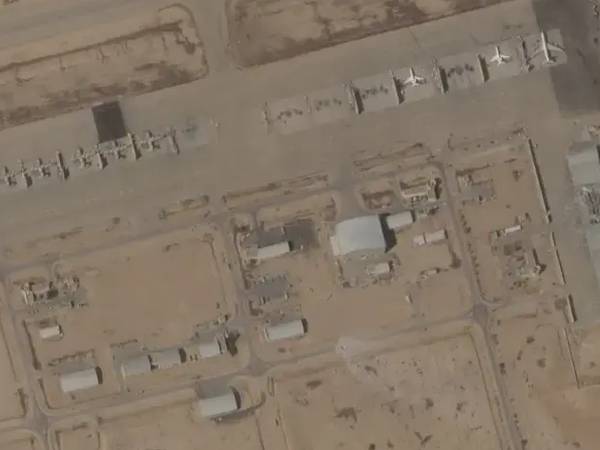Satellite images released Thursday have revealed the extent of the damage caused by Iran's ballistic missile attack on Israel’s Nevatim air base, located near Be'er Sheva.
The missile strike, which occurred Tuesday night, marks an escalation in the ongoing hostilities between Israel and Iran, which supports Hezbollah and Hamas militants.
The images, shared by the Associated Press, show a large hole in the roof of a hangar near the main runway of the base, with debris scattered around. Nevatim is home to several critical Israeli Air Force squadrons. However, Israeli Defense Forces (IDF) officials have not confirmed what caused the destruction seen in the photos.
The IDF confirmed structural damage at multiple bases but stressed that no casualties were reported, and no aircraft were harmed.
Sky News has also identified at least seven impact sites, including two Israeli airbases, a school, and two locations near the area believed to house Mossad's headquarters.
The news outlet has geolocated three videos indicating that the Nevatim airbase was targeted in the recent missile strike. Although none of the videos confirm a direct hit on the base or the extent of any damage, the footage collectively suggests that missiles landed within its perimeter, with at least shrapnel damage to the site.
In the videos, at least eight missiles are seen exploding in the direction of the base.
The strike, the second direct attack from Iran, follows an earlier missile bombardment by Iran which included targeting Nevatim in April, the base considered a critical target for Israel’s air defense.
Nevatim base, situated east of Be'er Sheva in southern Israel, houses three squadrons of F-35 fighter jets, along with transport units flying Super Hercules and Hercules aircraft. It also serves as the home of the Wing of Zion, Israel's official state aircraft.
Interceptions by Israel's air defense systems, designed to destroy or deflect incoming missiles, make it challenging to determine if the eventual landing sites of missiles or debris were the intended targets. Iran claimed that 90% of the missiles hit their targets, while Israel reported that many were intercepted.
Although the Iron Dome is the most recognized component of Israel's defense, Arrow 2 and 3 systems were the primary defenses against the long-range ballistic missiles launched by Iran. These systems operate outside the Earth's atmosphere, intercepting and neutralizing missiles before they can reach their targets.
